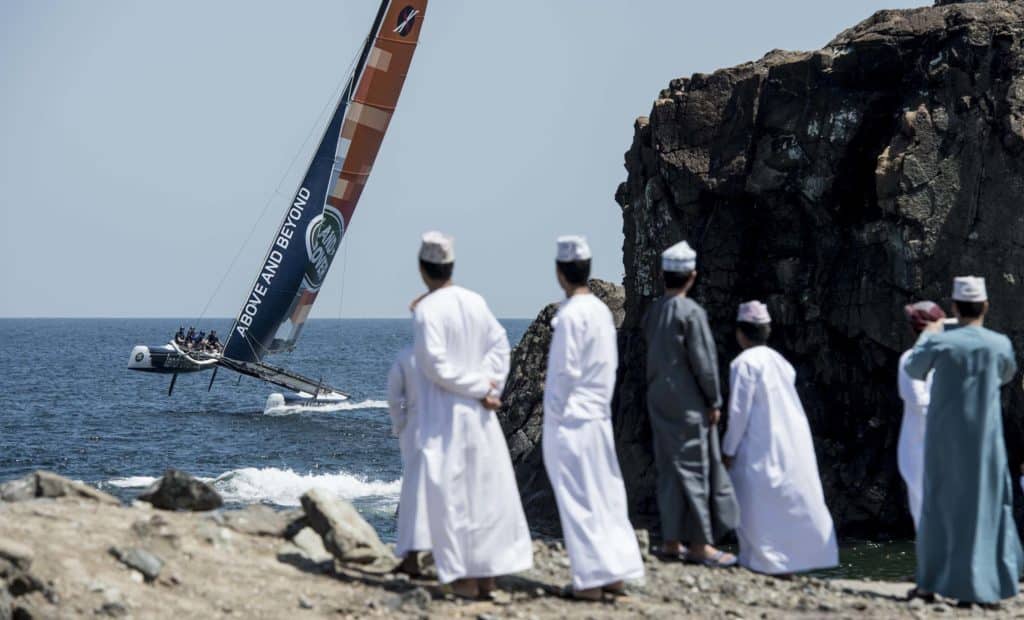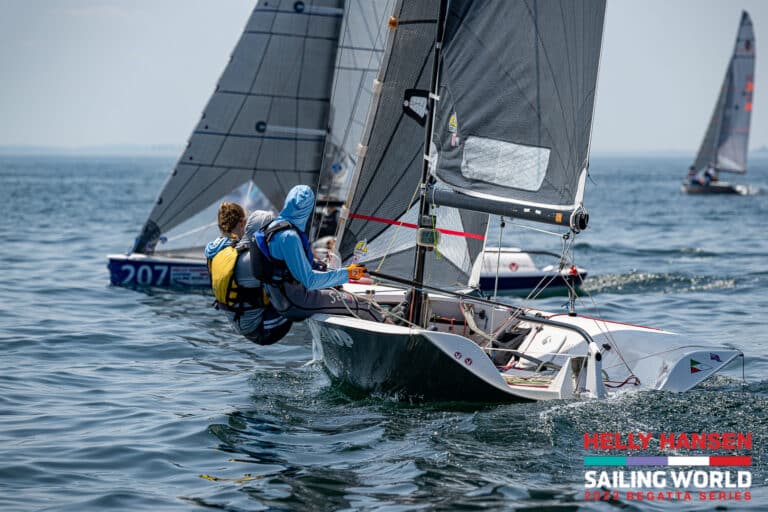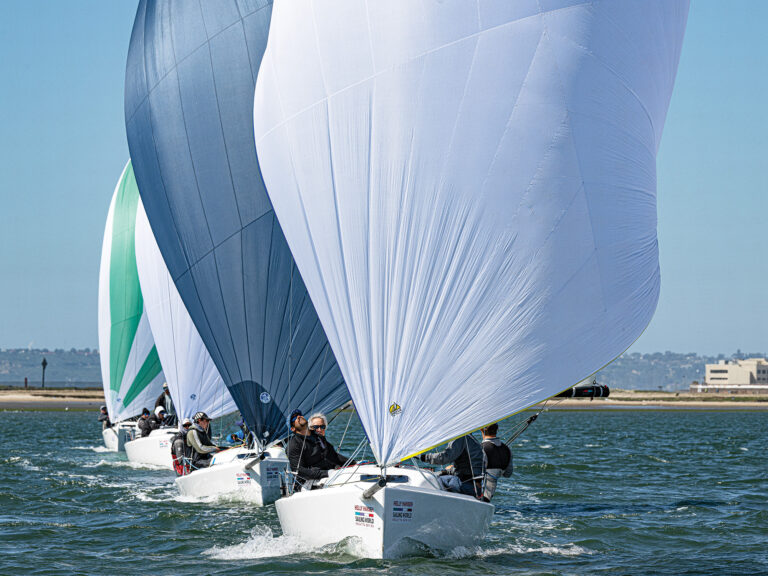When asked during a Q&A session at February’s US Sailing Leadership Forum how to best grow sailing, our magazine editor Dave Reed opined that we grow it “one body at a time.”
He’s right. A personal introduction is effective. We all know neighbors, workmates, relatives, etc., that we could bring along for a daysail or a casual race. If this was encouraged among the boats on which we sail with or against, sailing would literally grow.
When the question came to me, I was less specific. People, I feel, are attracted to shore. They fish, they beachcomb, they picnic, and they may happen upon and watch other people sail. Our recreation has a lot of spectators—many of whom we don’t even know are watching. That’s our advantage. We just need to make it easy for them to make the leap from watching to doing.
When the redesigned America’s Cup was launched in 2010, there was a lot of talk about how it was going to grow sailing. With the high-speed racing close to shore, a new audience would be drawn to the action, and the notion for this audience to try sailing would take hold.
But it’s going to take a lot more than the attitude of “if we show it, they will go sailing.”
“The focus of the America’s Cup was on drama and technology, which attracts coverage and viewers but doesn’t help the non-sailing public understand any path into sailing,” says John Arndt, of SailSFBay, a Bay Area non-profit dedicated to growing participation in sailing. “So the primary effort of SailSFBay was to be in a position to help bridge the gap between the America’s Cup activity and the unknown affordable and approachable side of sailing.”
This included the launch of a website listing all of the Bay Area access points to sailing, and a partnership with the America’s Cup community outreach team to put small boats on display with signage and fliers. Among the enduring benefits, Arndt anticipates, is the heightened collaboration now among the sailing community groups, businesses, and yacht clubs.
Interestingly, a similar plan was hatched on the opposite side of the country. Sail Charleston, an organization also dedicated to increasing participation, planned to leverage the hugely popular Charleston Race Week to show people what sailing was all about.
With well over 200 boats competing in Charleston Harbor in 2013, a free, one-day exhibition of sailing was hosted for people to see what it was all about. With ads placed in mainstream media providing a good attendance, representatives from local yacht clubs, sailing associations and sailing-oriented businesses were on hand to talk about opportunities to get involved in sailing, with a wide range of boats on display.
“It all worked really well,” says Greg Fisher, director of College of Charleston sailing. “All the various segments of sailing were on hand to answer any questions people had about the sport. Plus, depending on where someone lived around the harbor, there was someone with a program, ready to take care of their needs and sign them up. We had a large spectator boat available to take people out to the racecourse. That gave them a chance to really witness what racing is all about. I was on the boat commenting and answering questions so people had an opportunity to walk away with a nice understanding about all the facets of sailing.”
When it comes to attracting spectators, what I find particularly brilliant are offshore races that start in view of land. The adventure element of these races easily captures the imagination of the non-sailor and tends to gain mainstream media attention. Starting in view of this audience is simply smart business.
The Rolex Sydney Hobart Yacht Race is a prominent example, as no yachting event in the world draws such media coverage than does the start on Sydney Harbour. The setting attracts hundreds of spectator craft and people line the shore as helicopters buzz above the fleet, filming for television feeds sent around the world. The “stadium sailing” model has been integral to the Extreme Sailing Series for eight years. Circuit organizer Mark Turner estimates that more than two million people have physically seen, up close, his Extreme 40 catamaran circuit.
“We see our attendance is about 95 percent or more people who will have not seen sailing otherwise,” says Turner. “As to what might get them into sailing for the first time, I see that as a combination of factors: inspiration, accessibility, relative affordability, and pathway. The funnel needs to be as wide as possible, and then mechanisms for allowing people to actually go try, and keep them interested, are fundamental.”
Rich Jepsen, a sailing school professional and Chair of the Training Committee at US Sailing, says that growth comes from a target audience: “After years of trying to market sailing to would-be sailors, we believe there’s a narrow band of people that might be tempted to take up sailing because they saw it. That band is between those folks who are already avid sailors and those who would never, ever go sailing. I’m not sure if that is five percent or 10 percent of the population, but it certainly is not 20 percent. However, if we set our expectations properly, we can have a dramatic increase in sailing participation, but certainly still at the margins of the population overall.”
Which brings me back to my initial contention. Our recreation has plenty of spectators. When an event is underway and viewable, it attracts more onlookers. Events don’t need to be glamorous, only head-turning. We just need to make it easy for these spectators to move from watching to doing.
In my area, the beer-can racing season draws the community to San Diego Bay for an evening of boat watching and wine sipping. I’m now inspired to capture a percentage of this audience.
Without a local organization dedicated to growing participation in sailing, I launched into Google and Yelp to compile a list of schools, rentals, and crew lists, and then wrote up some persuasive myth-busters about sailing. When the Wednesday night races fill the bay with activity, I will try my hand at being a sailing activist. Assisted by my golden retriever as the icebreaker, I’ll hand out my “Go Sailing” fliers along the picnic path. I’ve talked the talk, and this summer I will walk the walk. I will move someone from imagination to activation.










